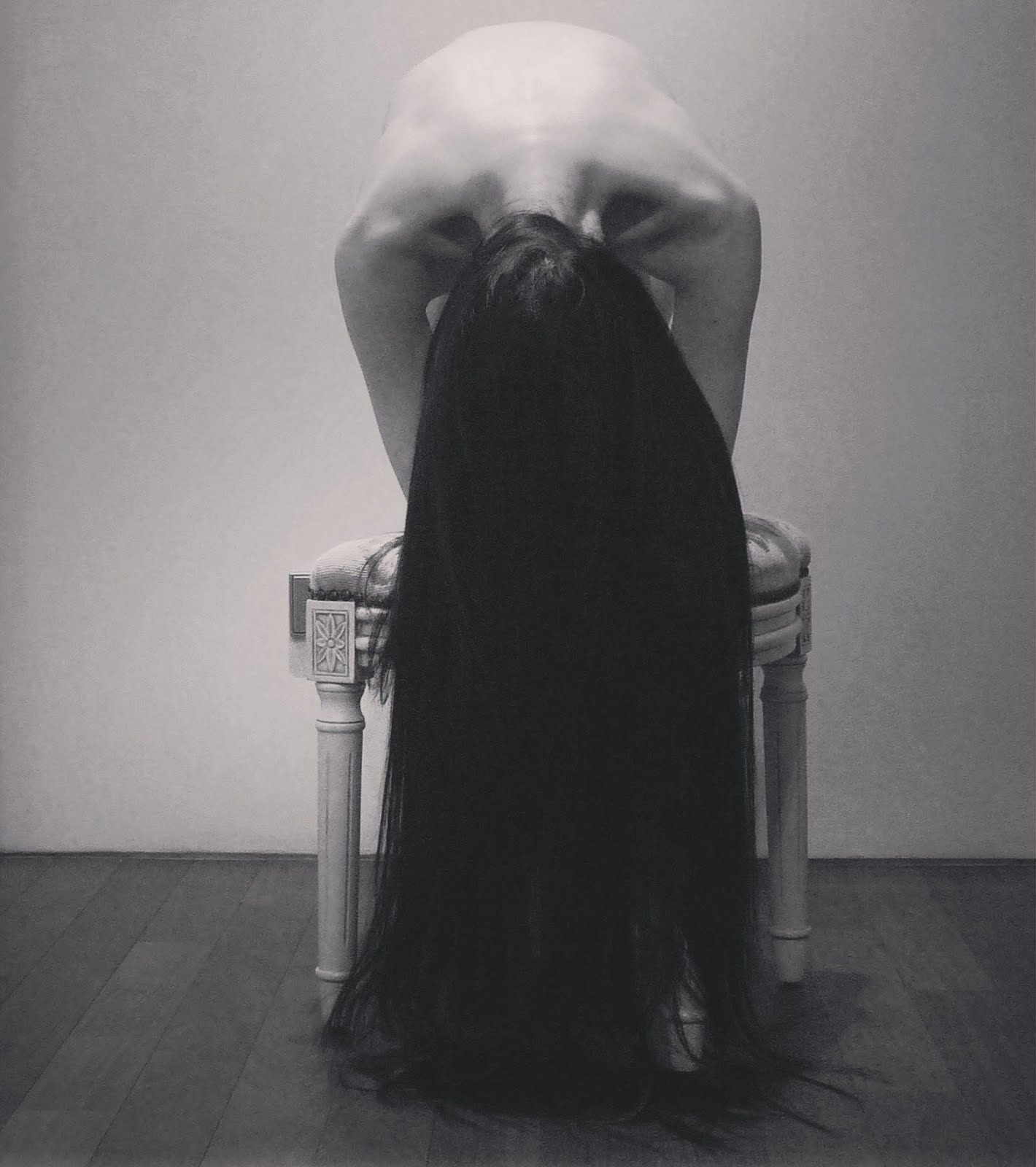 Sea of Buddhas, 1995
Sea of Buddhas, 1995
"The art scene I knew in New York in the 1970s was dominated by minimal and conceptual art, experiments in visualizing how abstract concepts. It occurred to me that similar motives inspired the making of art in twelfth-century Japan, when they reproduced the afterlife conceptualized as the Buddhist Pure Land Western Paradise in model form in this world. Thus we have an installation of a thousand and-one Senju Kanon "Thousand-Armed Merciful Bodhisattva Avalokitesvara" figures passed down eight-hundred years to this day in Kyoto. After seven years of red tape, I was finally granted permission to photograph in the temple of Sanjusangendo, "Hall of Thirty-Three Bays." In special preparation for the shoot, I had all late-medieval and early-modern embellishments removed, as well as having the contemporary fluorescent lighting turned off, recreating the splendor of the thousand bodhisattvas glistening in the light of the morning sun rising over the Higashiyama hills as the Kyoto aristocracy might have seen in the Heian period (794-1185). Will today's conceptual art survive another eight-hundred years?" ~Hiroshi Sugimoto
(Below are two images of the hall inside Sanjusangendo for comparison, which are obviously not Sugimoto's photographs.)

And... some other beautiful and intriguing works of Hiroshi Sugimoto.
Theatres
Since the 1970s, Sugimoto has worked on his photo-series entitled «Theaters,» in which he photographs auditoriums of American movie theaters, and drive-in movies, during showings. The exposure time used for the photograph corresponds with the projection time of the film. This allows him to save the duration of the entire film in a single shot. What remains visible of the film’s time-compressed, individual images is the bright screen of the movie theater, which illuminates the architecture of the space. That its content retreats into the background makes the actual film a piece of information, manifesting itself in the (movie theater) space. As a result, instead of as a content-related event, film presents itself here as the relationship between time and spatial perception.
"One night I had an idea while I was at the movies: to photograph the film itself. I tried to imagine photographing an entire feature film with my camera. I could already picture the projection screen making itself visible as a white rectangle. In my imagination, this would appear as a glowing, white rectangle; it would come forward from the projection surface and illuminate the entire theater. This idea struck me as being very interesting, mysterious, and even religious." ~Hiroshi Sugimoto
(Source of the above two paragraphs: Cat. Thomas Kellein, Hiroshi Sugimoto, «Time Exposed,» 1995, p. 91)
Hiroshi Sugimoto's photographs of empty theatres are very much distinguished by the space left for their viewers, the lengthy exposure time which resulted in the illuminated screen being such a dominant feature, and a sense of temporality experienced by the viewers. The imagery here reminds me of what is conventionally used in psychoanalysis or hypnotism, indeed emanating a sense of soothing, mysterious and even religious air. Hiroshi Sugimoto, «Theaters», 1978. Paramount, Oakland, 1994 © Hiroshi Sugimoto
Hiroshi Sugimoto, «Theaters», 1978. Paramount, Oakland, 1994 © Hiroshi Sugimoto Hiroshi Sugimoto, «Theaters», 1978. Orinda Theater, Orinda, 1992 © Hiroshi Sugimoto
Hiroshi Sugimoto, «Theaters», 1978. Orinda Theater, Orinda, 1992 © Hiroshi Sugimoto
Seascapes
"Water and air. So very commonplace are these substances, they hardly attract attention―and yet they vouchsafe our very existence. The beginnings of life are shrouded in myth: Let there be water and air. Living phenomena spontaneously generated from water and air in the presence of light, though that could just as easily suggest random coincidence as a Deity. Let's just say that there happened to be a planet with water and air in our solar system, and moreover at precisely the right distance from the sun for the temperatures required to coax forth life. While hardly inconceivable that at least one such planet should exist in the vast reaches of universe, we search in vain for another similar example. Mystery of mysteries, water and air are right there before us in the sea. Every time I view the sea, I feel a calming sense of security, as if visiting my ancestral home; I embark on a voyage of seeing." ~Hiroshi Sugimoto
The Architecture of Time, 1997
These two absolutely gorgeous and transcendent photographs of Tadao Ando's Church of the Light in Osaka is from Sugimoto's Architecture Series. Tadao Ando is one of my favourite contemporary architects and what attracted me first to his works was exactly the Church of the Light.
"The light seems to be literally dissolving the concrete in the same way that the sky dissolved the line of the horizon in the Seascapes. Sugimoto shows us that the light is eternal and the building is just its frame." (Review by Arcy Douglass on PortlandArt.net)












































 Green (京都 西芳寺). Saihoji, Kyoto.
Green (京都 西芳寺). Saihoji, Kyoto.






















